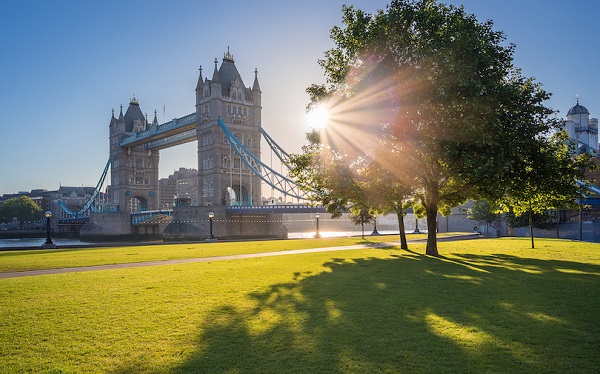Alberta
Team sports and group dance not yet approved. Restaurants open with restrictions. – Details on health measures easing February 8

From the Province of Alberta
More health measures will ease on Feb. 8
Additional health measures will be eased for restaurants, indoor fitness and some children’s activities, effective Feb. 8.
Step 1 of Alberta’s four-step framework to ease restrictions is based on a COVID-19 hospitalization benchmark of 600, including intensive care patients. This benchmark was reached on Jan. 28.
The full, four-step framework for easing restrictions can be viewed here.
“Albertans have done a great job of bringing our numbers down from our peak in December. We aren’t out of the woods yet, but there are opportunities where we can safely ease restrictions while also protecting our health-care system. This first step is a cautious one, and it will bring relief to many Albertans and Alberta businesses.”
“We are able to ease restrictions on Feb. 8 thanks to the efforts of Albertans. We need to stick to a stepped approach so we don’t risk the steady improvements we’ve made. Although restrictions will remain in place, the path forward gives us all more options in our daily lives.”
Indoor and outdoor children’s sport and performance
- Children’s sport and performance activities are permitted if they are related to school activities, such as physical education classes.
- This will allow K-12 schools and post-secondary institutions to use off-site facilities to support curriculum-related educational activities.
Indoor fitness
- Only one-on-one training is permitted for indoor fitness activities (e.g. fitness in dance studios, training figure skating on ice, one-on-one lessons).
- One-on-one sessions cannot interact with others and there must be a minimum of three metres distance between sessions in the same facility.
- Sessions have to be scheduled or by appointment.
- No drop-in for individuals or groups is allowed.
- No sports games, competitions, team practice, league play or group exercise of any kind.
- Trainers must be professional, certified and/or paid trainers who are providing active instruction and correction. Passive supervision of a physical activity is not considered training.
- Trainers should remain masked during the session; clients are not required to wear a mask while exercising.
- More than one trainer and client ‘pair’ are allowed into the facility, studio, rink, court, pool, ice surface, etc., as long as:
- Each trainer and client stays three metres away from all other trainers and clients at all times, including in entryways and exits.
- Each trainer only interacts with their assigned client, and each client only interacts with their assigned trainer.
- No interaction between clients or between trainers is allowed.
- No ‘cycling through’ multiple trainers, as in circuit training.
Restaurants, cafes and pubs
- Restaurants, cafes and pubs must collect the contact information of one person from the dining party.
- Up to a maximum of six people per table; individuals must be from same household or the two close contacts for people living alone.
- Liquor service ends at 10 p.m.
- In-person dining must close by 11 p.m.
- No entertainment allowed (e.g., no VLTs, pool tables, live music, etc.)
Alberta’s government is responding to the COVID-19 pandemic by protecting lives and livelihoods with precise measures to bend the curve, sustain small businesses and protect Alberta’s health-care system.
Alberta
Alberta judge sides with LGBT activists, allows ‘gender transitions’ for kids to continue

From LifeSiteNews
‘I think the court was in error,’ Alberta Premier Danielle Smith has said. ‘There will be irreparable harm to children who get sterilized.’
LGBT activists have won an injunction that prevents the Alberta government from restricting “gender transitions” for children.
On June 27, Alberta King’s Court Justice Allison Kuntz granted a temporary injunction against legislation that prohibited minors under the age of 16 from undergoing irreversible sex-change surgeries or taking puberty blockers.
“The evidence shows that singling out health care for gender diverse youth and making it subject to government control will cause irreparable harm to gender diverse youth by reinforcing the discrimination and prejudice that they are already subjected to,” Kuntz claimed in her judgment.
Kuntz further said that the legislation poses serious Charter issues which need to be worked through in court before the legislation could be enforced. Court dates for the arguments have yet to be set.
READ: Support for traditional family values surges in Alberta
Alberta’s new legislation, which was passed in December, amends the Health Act to “prohibit regulated health professionals from performing sex reassignment surgeries on minors.”
The legislation would also ban the “use of puberty blockers and hormone therapies for the treatment of gender dysphoria or gender incongruence” to kids 15 years of age and under “except for those who have already commenced treatment and would allow for minors aged 16 and 17 to choose to commence puberty blockers and hormone therapies for gender reassignment and affirmation purposes with parental, physician and psychologist approval.”
Just days after the legislation was passed, an LGBT activist group called Egale Canada, along with many other LGBT organizations, filed an injunction to block the bill.
In her ruling, Kuntz argued that Alberta’s legislation “will signal that there is something wrong with or suspect about having a gender identity that is different than the sex you were assigned at birth.”
She further claimed that preventing minors from making life-altering decisions could inflict emotional damage.
However, the province of Alberta argued that these damages are speculative and the process of gender-transitioning children is not supported by scientific evidence.
“I think the court was in error,” Alberta Premier Danielle Smith said on her Saturday radio show. “That’s part of the reason why we’re taking it to court. The court had said there will be irreparable harm if the law goes ahead. I feel the reverse. I feel there will be irreparable harm to children who get sterilized at the age of 10 years old – and so we want those kids to have their day in court.”
READ: Canadian doctors claim ‘Charter right’ to mutilate gender-confused children in Alberta
Overwhelming evidence shows that persons who undergo so-called “gender transitioning” procedures are more likely to commit suicide than those who are not given such irreversible surgeries. In addition to catering to a false reality that one’s sex can be changed, trans surgeries and drugs have been linked to permanent physical and psychological damage, including cardiovascular diseases, loss of bone density, cancer, strokes and blood clots, and infertility.
Meanwhile, a recent study on the side effects of “sex change” surgeries discovered that 81 percent of those who have undergone them in the past five years reported experiencing pain simply from normal movements in the weeks and months that followed, among many other negative side effects.
Alberta
Alberta Independence Seekers Take First Step: Citizen Initiative Application Approved, Notice of Initiative Petition Issued

Alberta’s Chief Electoral Officer, Gordon McClure, has issued a Notice of Initiative Petition.
This confirms a Citizen Initiative application has been received and the Chief Electoral Officer has determined the requirements of section 2(3) of the Citizen Initiative Act have been met.
Approved Initiative Petition Information
The approved citizen initiative application is for a policy proposal with the following proposed question:
Do you agree that Alberta should remain in Canada?
The Notice of Initiative Petition, application, and statement provided by the proponent are available on Elections Alberta’s website on the Current Initiatives Petition page.
As the application was received and approved prior to coming into force of Bill 54: Election Statutes Amendment Act, the Citizen Initiative process will follow requirements set out in the Citizen Initiative Act as of June 30, 2025.
Next Steps
- The proponent must appoint a chief financial officer within 30 days (by July 30, 2025).
- Once the 30-day publication period is complete and a chief financial officer has been appointed, Elections Alberta will:
- issue the citizen initiative petition,
- publish a notice on the Current Initiatives Petition page of our website indicating the petition has been issued, specifying the signing period dates, and the number of signatures required for a successful petition, and
- issue the citizen initiative petition signature sheets and witness affidavits. Signatures collected on other forms will not be accepted.
More information on the process, the status of the citizen initiative petition, financing rules, third party advertising rules, and frequently asked questions may be found on the Elections Alberta website.
Elections Alberta is an independent, non-partisan office of the Legislative Assembly of Alberta responsible for administering provincial elections, by-elections, and referendums.
-

 Automotive1 day ago
Automotive1 day agoElectric vehicle sales are falling hard in BC, and it is time to recognize reality.
-

 Brownstone Institute2 days ago
Brownstone Institute2 days agoFDA Exposed: Hundreds of Drugs Approved without Proof They Work
-

 Energy1 day ago
Energy1 day agoChina undermining American energy independence, report says
-

 Business1 day ago
Business1 day agoTrump on Canada tariff deadline: ‘We can do whatever we want’
-

 Business1 day ago
Business1 day agoEurope backs off greenwashing rules — Canada should take note
-

 Automotive1 day ago
Automotive1 day agoPower Struggle: Electric vehicles and reality
-

 Business11 hours ago
Business11 hours agoCanada Caves: Carney ditches digital services tax after criticism from Trump
-

 Crime11 hours ago
Crime11 hours agoSuspected ambush leaves two firefighters dead in Idaho






